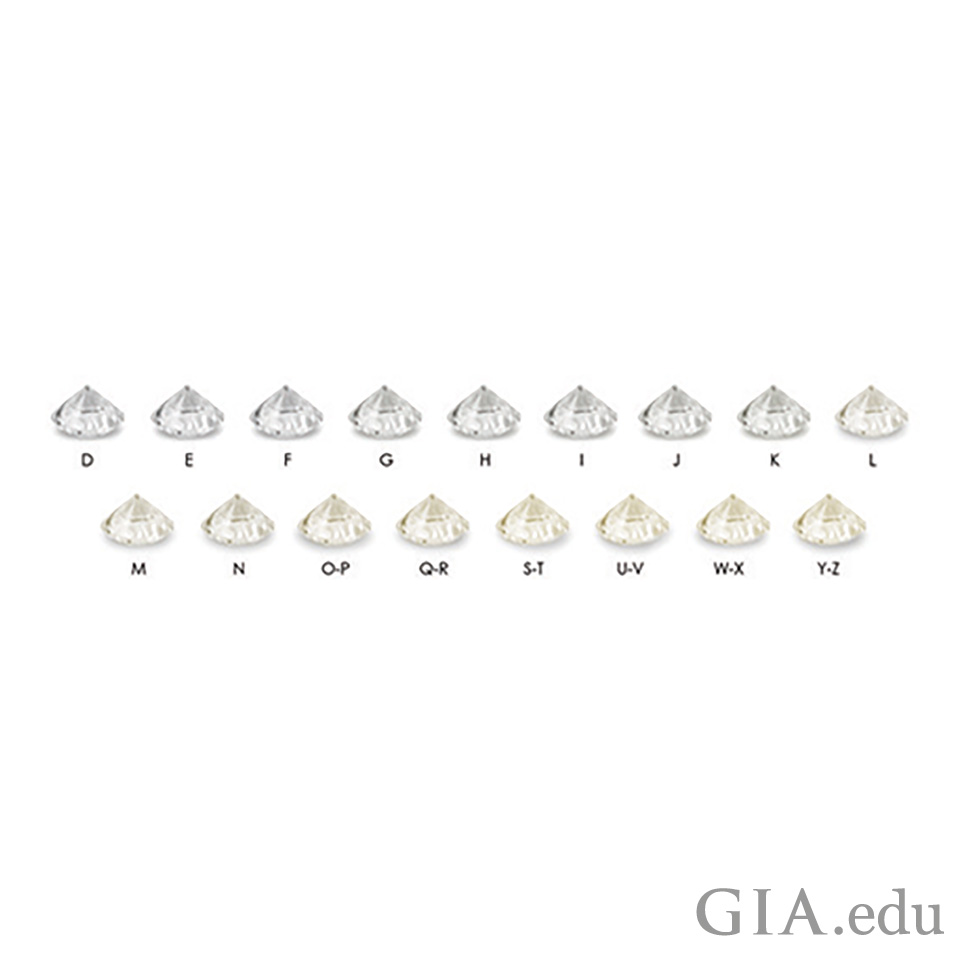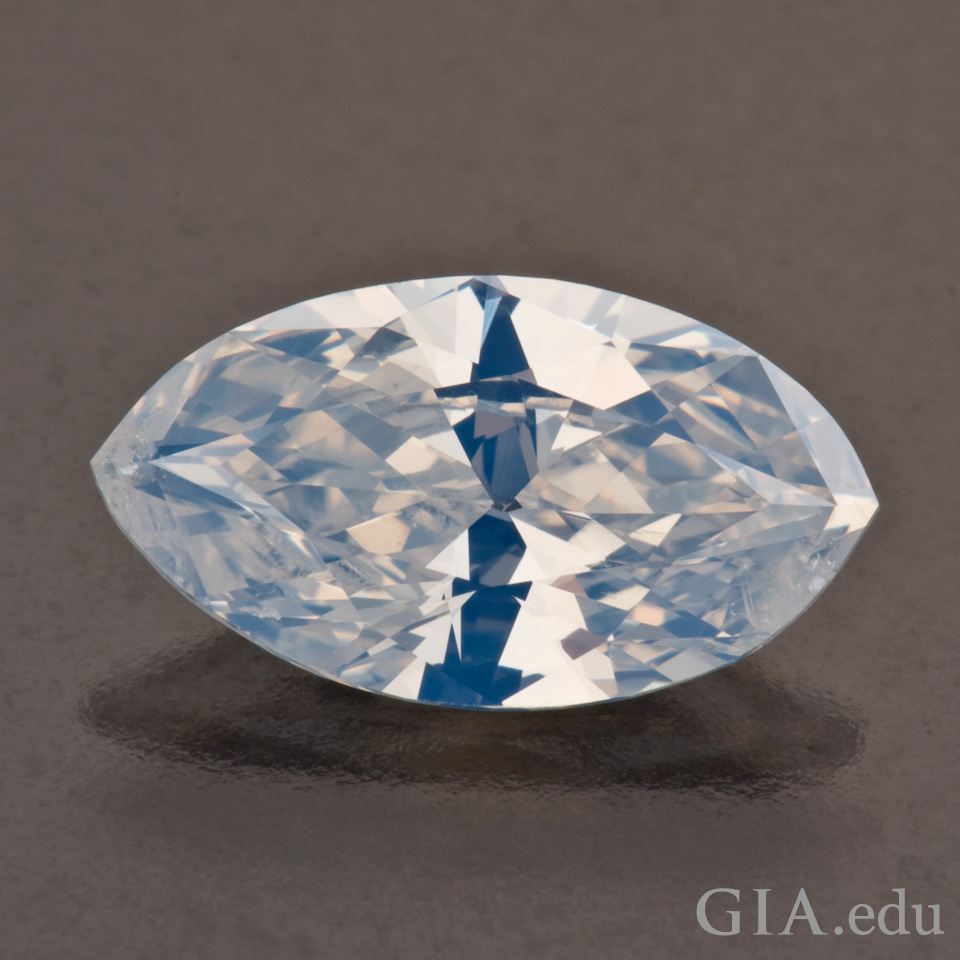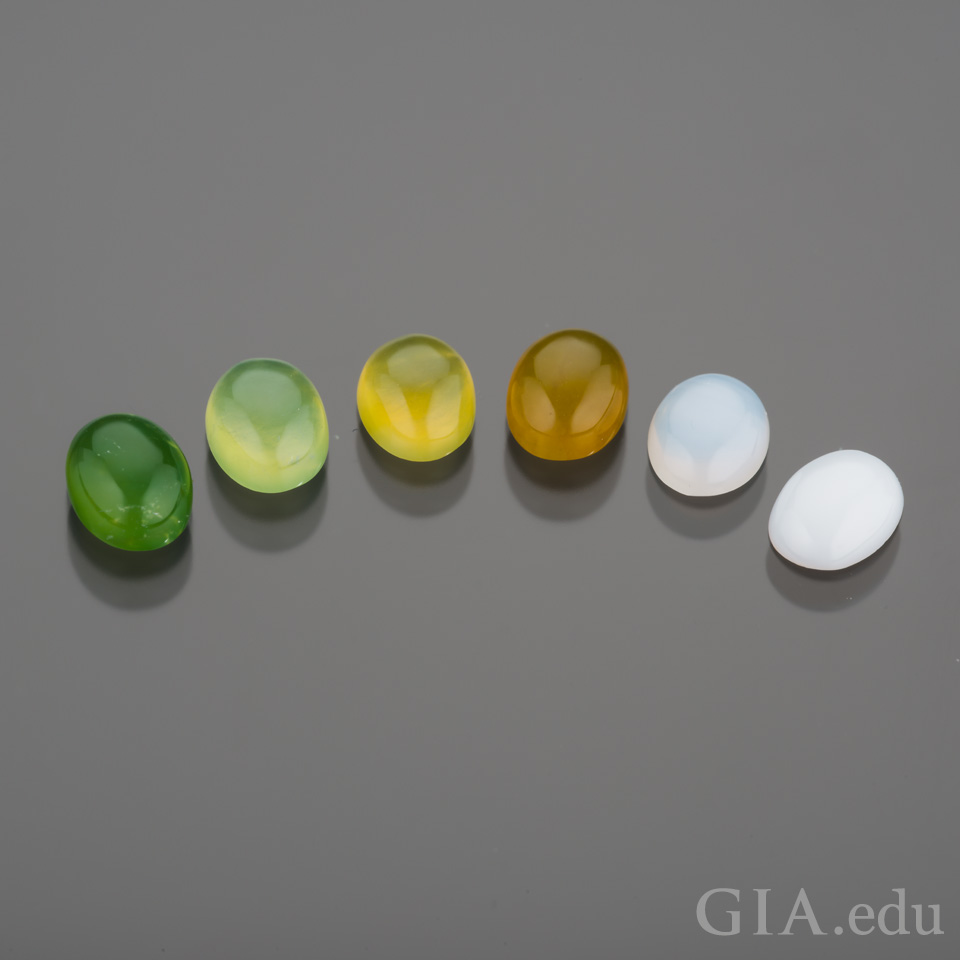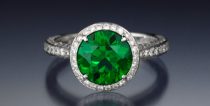Colored diamonds have been smashing sales records at auction houses the past few years, but here’s one that hasn’t gotten a lot of press: the white diamond. Yes, white! Get ready to fall in love with this remarkable beauty.
You’ll often hear the term “white” applied to colorless diamonds that fall within the GIA D-to-Z color scale or chart. But diamonds in the D-to-Z range are not white at all. Their hues can range from colorless (like a drop of pure water) to having tints of light yellow, light brown or gray. The rarity, and therefore the value, of these diamonds is based in part on how closely they approach colorlessness. All things being equal, the more colorless the diamond, the more rare and expensive it is.

GIA’s D-to-Z diamond color-grading system measures the degree of colorlessness by comparing a stone under controlled lighting and precise viewing conditions to masterstones of established color value.
Then there are diamonds whose colors fall outside the D-to-Z color range, and these diamonds have distinct colors. The geological conditions required to produce them are rare, making natural colored diamonds scarce and highly prized. Colored diamonds come in almost any color you can imagine: yellow diamonds and brown diamonds are the most common, followed by pink and blue diamonds. Red, green, purple and orange are generally considered the most rare, but there are also white diamonds.
A White Diamond Is not Colorless
White diamonds are not color graded according to the GIA D-to-Z color scale because they are not colorless: they are white. White does not appear on the color spectrum, because white is the sum of all colors.

A 1.57 carat (ct) marquise shape Fancy white diamond from the Aurora Butterfly of Peace. Photo: Robert Weldon/GIA

Since “white” is not a color, but rather the sum of all colors, it doesn’t appear on the color spectrum.
What Makes a White Diamond?
The presence of sub-microscopic inclusions scatter light passing through the diamond, giving it a translucent “milky” white face-up appearance.

A trio of Fancy white diamonds displaying a dispersion that resembles a faint play-of-color. From left to right: 1.08 ct, 0.62 ct and 1.02 ct Photo: Elizabeth Schrader/GIA
White diamonds are also sometimes described as “opalescent,” because of the flashes of color that can be seen when viewing the diamond face-up. In some cases, white diamonds are reminiscent of a white opal with weak play-of-color.

A collection of opals from Brazil. The bluish white and white opals on the right bear the milky translucence and weak play-of-color reminiscent of some white diamonds. Photo: Robert Weldon/GIA. Courtesy: Cody Opal
White Diamonds: Opalescent Beauties

A 2.11 ct pear shape Fancy white diamond from the Aurora Butterfly of Peace. Photo: Robert Weldon/GIA
White diamonds are infrequently submitted to GIA, however a few that GIA has examined came from the Panna mine in India. So, if you spot one during a shopping expedition or a museum visit, consider yourself fortunate – and enjoy the treat!
Determining the color grade of a fancy color diamond is no easy task and there are a number of factors that make it especially challenging. If we’ve whetted your appetite for these beauties, be sure to learn all about GIA’s color grading system for Fancy color diamonds, before you begin your search for them.






